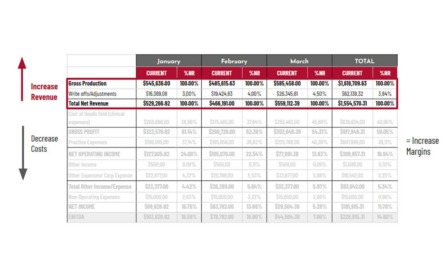By Cameron Herold
Company culture matters. It matters to the people that are working for you right now and it matters to the people you are trying to hire. Without a healthy company culture in place, you will either not attract new applicants, or you won’t be hiring the right people for the job.
Consider Google and Microsoft. Which of these companies do you think of as a great company to work for? No one ever says Microsoft. Why is that? They’re both on the West Coast of the United States. They both have billions of dollars in cash. They’re both in the computer space. They both hire computer engineers. They’re both tech companies. Why is it that Google is the best company to work for and Microsoft never really makes that list? It’s because Google decided culture was critical. From the beginning, Google decided that culture was going to be a core part of their business. This is exactly how we need to be thinking about our dental practices.
Culture may seem like one of those buzzwords that people use to be trendy, but it truly is a critical piece of operating a successful business. If you have any hope of hiring the right people for your organization, there are a few best practices you can follow to create a better environment for hiring the right people.
Visualize your business three years in the future
Imagine if you could look at your locations or your business three years from now. What would they look like? Athletes use the process of visualization. They practice seeing themselves performing events repeatedly in their mind, so that when they perform the event, it becomes instinctual. Can you imagine if you were so clear on what your business looked like that your business operated on instinct?
The problem in most of our companies is the entrepreneur usually has a vision and no one else can read their mind. It’s like asking someone to describe a scene from a movie that they’ve never seen. If our employees can’t see what we can see, they stumble through day-to-day trying to build our company for us. They aren’t even making bad decisions; they’re just making decisions based on what they think we want. We need to tell them what we want.
If you’re going to write a Vivid Vision®, it needs to be a four- or five-page written description of your company three years from now. Get out of the office to seek some inspiration, and don’t be afraid to get out of the box and dream big. For the best results, consider doing this without the use of technology. Writing this out by hand on a piece of paper will remove any potential distractions and allow you to focus on the future.
Pretend that you’re walking through your company’s org chart. Describe what your marketing will look like. Describe sales. Describe finance. Describe dentistry. Describe all the different aspects of your company, using three or four bullet points around each area. Describe what the customers are saying about you, what your company culture looks like, and what your locations feel like, inside and out. Our role as the entrepreneur is to describe it in its finished state so that the team can work together to bring that vision to life.
Recruiting, interviewing and hiring
Are you looking for a way to improve your recruitment process and increase retainment? Using a recruiting bonus is a valuable approach to beef up your recruitment process. If I’m hiring a $60,000 person, I put a $30,000 recruiting bonus in place. Anyone that refers a new hire is going to receive a $30,000 bonus at $6,000 a year for the next five years. Because it’s essentially free money, people will start poaching new recruits for you.
The first thing that happens for each new resume that comes in is our email system kicks back an auto reply saying, “Thanks so much for your resume. Please read our Vivid Vision® and this article of us in the media. If this sounds like the kind of company you want to help fly to the moon, apply now and put ‘interview me’ in the subject line.” If they don’t reply using the phrase “interview me” in the subject line, we don’t even read the resume. We keep moving. If they can’t follow a simple detail, they would not fit in with our culture. When they reply saying that they would like an interview, we kick back a second auto reply, saying, “Thanks again! We’ll be inviting you to a group interview. Before we bring you in, we need a quick two-minute video about why you want to work with us.” That becomes a great screening tool for culture as well.
For the recruiting process, try getting all your job postings written by a copywriter so that they pop off the page. While you might be able to write an informative job description that covers the basics, a professional copywriter can craft a compelling reason why people should come to work for you.
Getting the right people on the bus
In the book, “Good to Great”, author Jim Collins talks about getting the wrong people off the bus, the right people on the bus, and everyone in the right seats. What he means by that is either “you’re with us or you’re not.” You get it or you don’t. There is no halfway.
Essentially, I want you to focus on getting the right people in your organization, and the wrong people out. Even though it’s just as important as finding the right people, I have yet to find a company that works hard enough at getting rid of the wrong people. We all talk about retention, interviewing, recruiting, and culture, but we don’t talk about identifying the cultural cancers and getting rid of them.
Your receptionist should be your director of first impressions. As the first point of contact with everyone in the organization, the type of person you have as a receptionist matters. If you have a grumpy, negative receptionist, it will destroy your company. In my opinion, your dentists are the least important people in your company. With as little time as the dentists actually spend with their patients, it’s much more important to have excellent hygienists and front office employees.
When we are interviewing and hiring people, we need to be so clear on what we’re looking for. I’m much more interested in someone who is a great cultural fit than someone who has all the skills. Culture first, skillset second. Steve Jobs used to say that if he didn’t see the “twinkle” in their eyes, he didn’t bring them in to see if they had the skills because he didn’t care if they had the skills.
Our job as entrepreneurs and leaders is to grow the skills and confidence of our people. But what if you have someone who gets super high results, but with a low core values’ fit? Unfortunately, these are the people you must fire. It’s the dentist that no one can stand, or the hygienist no one can work with. Studies say that the cost of keeping the wrong person is 15 times their annual salary. Are high results worth the extra money you would be spending each year?
| Cameron Herold is known as The CEO Whisperer and Business Growth Guru. As COO of 1-800-GOT-JUNK?, Cameron guided the company from $2 million to $106 million in revenue, expanded to operations in four countries and 330 cities, while the organization was named as the number two company in Canada people desired to work for. In 2016, Cameron founded the COO Alliance when he realized that there were no peer groups for one of the most crucial roles in the company – the Chief Operating Officer/2nd in command. For more information or to contact Cameron, visit coo-alliance.com. |






